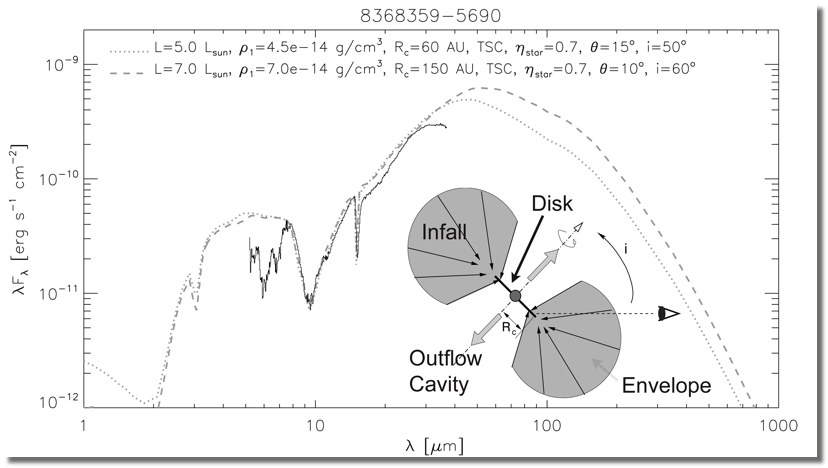StarFormation
There are a number of good summaries of the star formation process from previous NITARP studies.
Star Formation Links
Protostars vs Young Stars
Terminology is important. The term protostar has been used liberally. For this project we will use it to refer to the state of star's life in which accretion and infall are still the dominant. The term young star is generally referred to the phase after the accretion and infall processes have stopped, but the star has not yet reached the main sequence.
The protostellar phase is the least understood phase of stellar evolution. In this phase, the fundamental properties of a star, i.e stellar mass, stellar angular momentum and multiplicity are established; these properties determine the future evolutionary trajectory through the pre-main sequence, main sequence and post-main sequence phases. Protoplanetary disks are also created during the protostellar phase; and hence the protostellar phase will ultimately influence the properties of solar systems around stars. Despite the fundamental importance of the protostellar phase, there is currently no generally accepted theory of protostellar evolution. This is due to the unique challenges of studying protostars. Unlike subsequent phases of stellar evolution (except perhaps close binaries in post-main sequence phases), protostars can be influenced by environmental conditions such as the density, temperature and turbulence of the parental gas, collisions with neighboring protostars, and by radiation and winds from neighborhing stars. Furthemore, the protostars undergo rapid evolution in a time frame of only 100,000 years; protostars are consequently rare. Finally, are deeply embedded in molecular clouds and emit most of their luminosity in the far-IR, a regime which cannot be easily studied by ground-based and space-based telescopes.
Learning Points
- How does star formation start?
- What are the major forces that determine whether a star will form or not?
